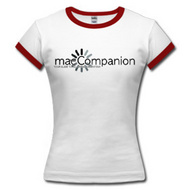
Mac Pro Podcast
Video Podcast Basics - Editing & Encoding for Vidcast
by Joseph Nilo
Ok, I hope you got some good tips last time that have you shooting some award-winning video. This week we’ll talk about editing and encoding it. There are a few players in the video-editing realm available from Apple: iMovie, Final Cut Express, and Final Cut Pro. Here’s an overview of what they’re all about:
iMovie |
Final Cut Express |
Final Cut Studio |
Free; $79 US as a part of iLife |
$299 US |
$1299 US |
Supports MiniDV only |
Supports MiniDV, DVCAM, DVCPro |
Supports most formats |
No logging of footage, batch capture, or batch export |
No logging of footage, batch capture, or batch export |
Logging of footage, batch capture, and batch export |
Only 1 video track |
99 video tracks |
99 video tracks |
Basic editing and effects |
More advanced editing and effects, compositing |
Most advanced editing, effects, compositing,animation, color correction, etc. |
There is a very complete list of the differences between these fine programs at http://www.apple.com/finalcut/
If you’re wondering what you need, here’s a basic rule of thumb: iMovie is fine for most amateur editing. If you outgrow that free program, try out Final Cut Express. If you are a professional video person dealing with advanced editing, compositing, etc., you will need Final Cut Pro.
If you think you need Final Cut Pro to have a successful video podcast, think again. Many vidcasters, including the most popular-- Rocketboom, use iMovie.
Basic Editing
So you’ve got your footage captured into your editor of choice. Now what? Much of your time might be spent in the initial setup and formatting of your video program. How do you want your program to flow? A basic format might include Intro graphics and music, various scenes separated by transitions or “bumpers”, outro and ending credits. Once you’ve settled on your formula, your viewers will expect it each week. This uniqueness will become “your show”.
If you’re using iMovie, the new version out with the iLife 06 suite has some nice titling options that will allow you to create some custom graphics for your program. Pull people in with some graphics or video, music, and a title sequence. There’s no rule of thumb on the best way to do this . . . but if you have a television, you have all the research material you need. Here are a few tips to help improve your editing:
• Don’t overuse transitions or effects. You might think it fun to throw in a clock wipe or page peel every once in a while, but use them sparingly. If you watch movies and TV, you’ll see that serious editors mainly stick with well-placed straight cuts between scenes.
• Watch out for long dissolves. A “dissolve” is a transition where one clip fades into another clip. This can be hard to encode to your final file format -- it requires a lot of information to do this and can cause pixillation in the signal.
• Cut to B-Roll. Unless you are incredibly interesting and your viewers can’t take their eyes off of you, it’s a good practice to incorporate some “B-Roll”. This is secondary footage that supports what you’re talking about. It can also help you edit out undesirable portions of your main footage (you guessed it-- “A-Roll”). A good rule of thumb is to use at least 2 different cuts of B-Roll if you’re going to use it at all.
Encoding for Vidcast
I have one VERY simple answer for you regarding encoding your video podcast. Buy QuickTime Pro ($29.99 US) and encode using the standard “Video for iPod” export option. This is a standard 320x240 H.264 video that looks wonderful and is compatible with iPods and iTunes.
If you’d like to go a little bigger with your video than 320x240, you can encode using MPEG-4. iPods support up to 480x480 resolution MPEG-4 files. See all of the specs here: http://www.apple.com/itunes/podcasts/techspecs.html
Here’s a little tip for you Final Cut users. It is standard practice to save out a QuickTime Movie from Final Cut and encode using that file. If you’re seeking higher quality encodes, use the “Export Using QuickTime Conversion” right off your timeline. What this does is bypass your render files and encode each frame at its highest quality, resulting in a much better-looking encode.
So now you’re ready and equipped to produce your award-winning video podcast! To learn more tips, tricks and tutorials revolving around Macs, audio, and video, check out my weekly video podcast, the Mac Pro Podcast at www.macpropodcast.com and my Mac Media Blog at www.macmediablog.com.

